The latest Strive is Canyon’s take on a no-compromises, race-ready enduro bike, created to be ridden fast and handle anything the trail throws at it.
It’s designed around 29in wheels, gets more suspension travel than the previous Strive and has had a massive geometry makeover, with Canyon even throwing some useful adjustment into the mix.
The efficiency-boosting Shapeshifter technology, designed to make life easier on the way up the hills, remains as does Canyon’s quality of finish and detailing.
As you’d hope, Canyon has delivered on the trail and there’s no denying just how specific this machine is. When ridden and pushed hard, the Strive is a seriously rewarding bike to ride.
But we don’t all want to race down every single trail and ride as hard as possible each time our tyres hit the dirt.
Canyon Strive CFR Underdog frame and suspension details
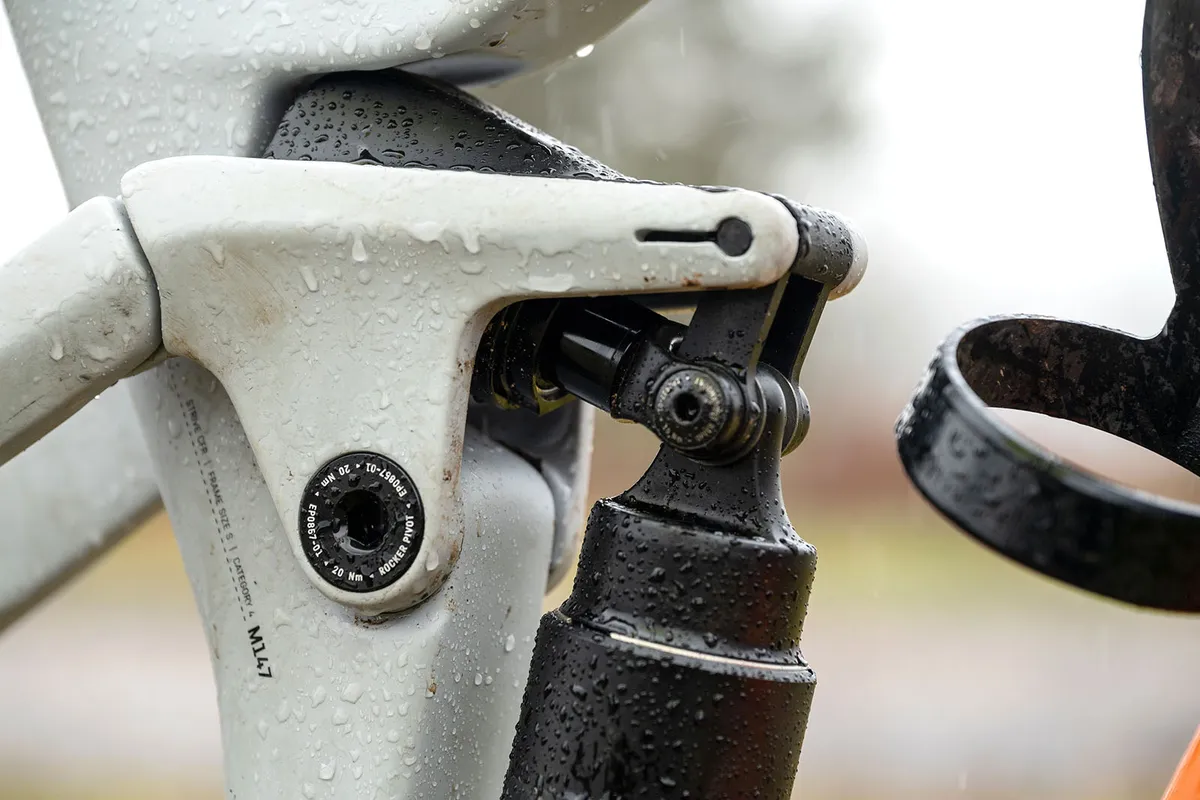
Canyon has made the Strive frame from its CFR (Canyon Factory Racing) carbon – a material reserved for the brand's top-tier frames.
Because this bike is about all-out speed, the German brand decided to design it around 29in wheels only. That means you can’t just bolt a smaller 27.5in rear wheel in place and hope it’ll work.
There are gear mounts on the underside of the top tube for bolting essentials in place, which is useful.
Cables are routed internally and foam liners are used to help prevent any annoying rattle when clattering through the bumps.
In a similar vein, Canyon have spared any expense when it comes to cladding the Strive with plenty of integrated rubber protection to help quieten chain slap and protect it in key areas. There’s a sizeable down tube cover, as well as a substantial textured chainstay protector on the driveside of the frame.
A SRAM Universal Derailleur Hanger means it’ll accept the latest T-Type Eagle Transmission if you’re tempted to upgrade, while Canyon’s very useful ‘Quixle Thru Axle’ 12x148mm axle holds the wheel in place. This features a quick-release lever that telescopes out of the axle and pivots, enabling you to use it for tool-free axle extraction. It’s a really nice touch.
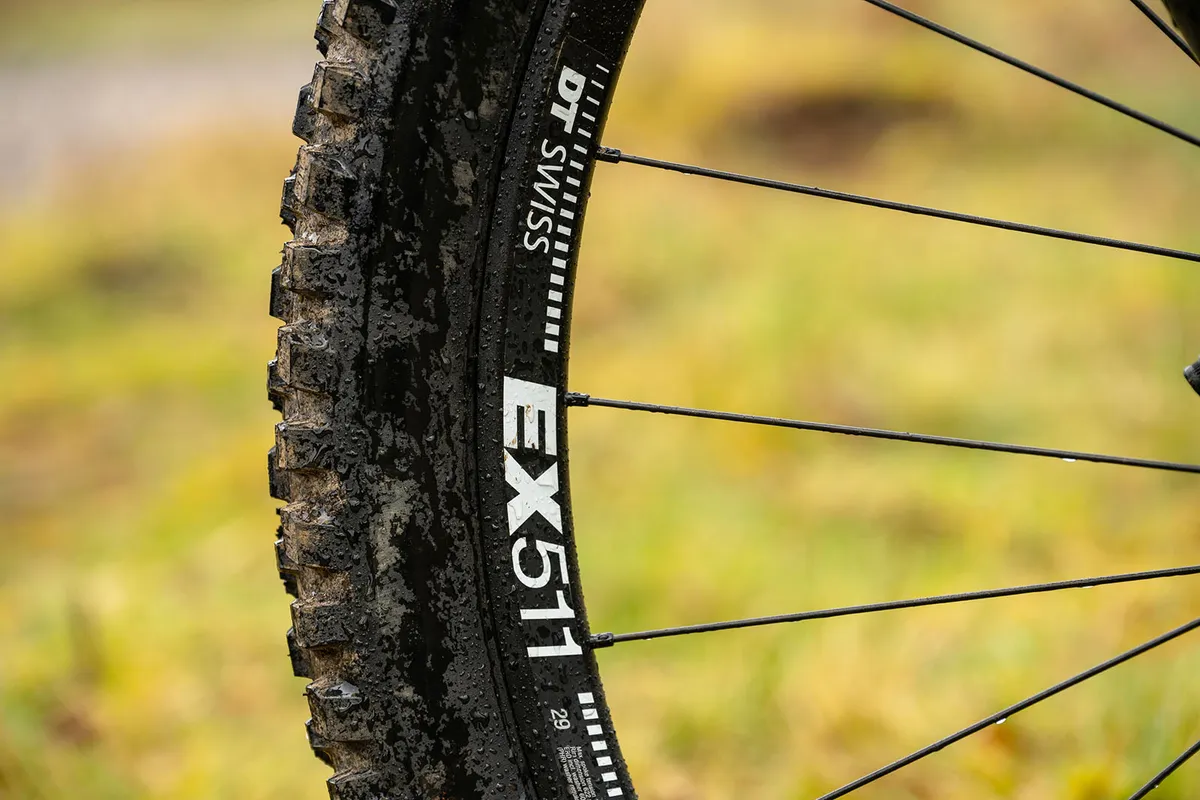
Compared to the previous Strive, the latest iteration gets a 10mm bump in travel, taking the total to 160mm.
This is delivered via a four-bar Horst-link layout, which Canyon says has been tweaked to make the most of the system for this particular application.
According to the brand, although anti-squat is higher at the sag point, it drops off quickly as the bike plunges through its travel in a bid to reduce pedal kickback. It's a concept, along with many others, you can read all about in our Ultimate guide to mountain bike rear suspension systems.
There’s around 33 per cent progression (which is pretty high) across the range of travel and Canyon says the Strive is comfortable working with an air or coil-sprung shock.
Finally, we need to talk about the all-important Shapeshifter.
This nifty little air-powered piston moves the upper shock mount in relation to the rocker link pivot. This change in position effectively reduces rear-wheel travel to 140mm and steepens the head and seat angles by 1.5 degrees to create a more comfortable and efficient bike on the climbs or the flat.
There are two modes to choose from (which are selected via the bar-mounted lever remote), named Shred and Pedal.
Canyon Strive CFR Underdog geometry details
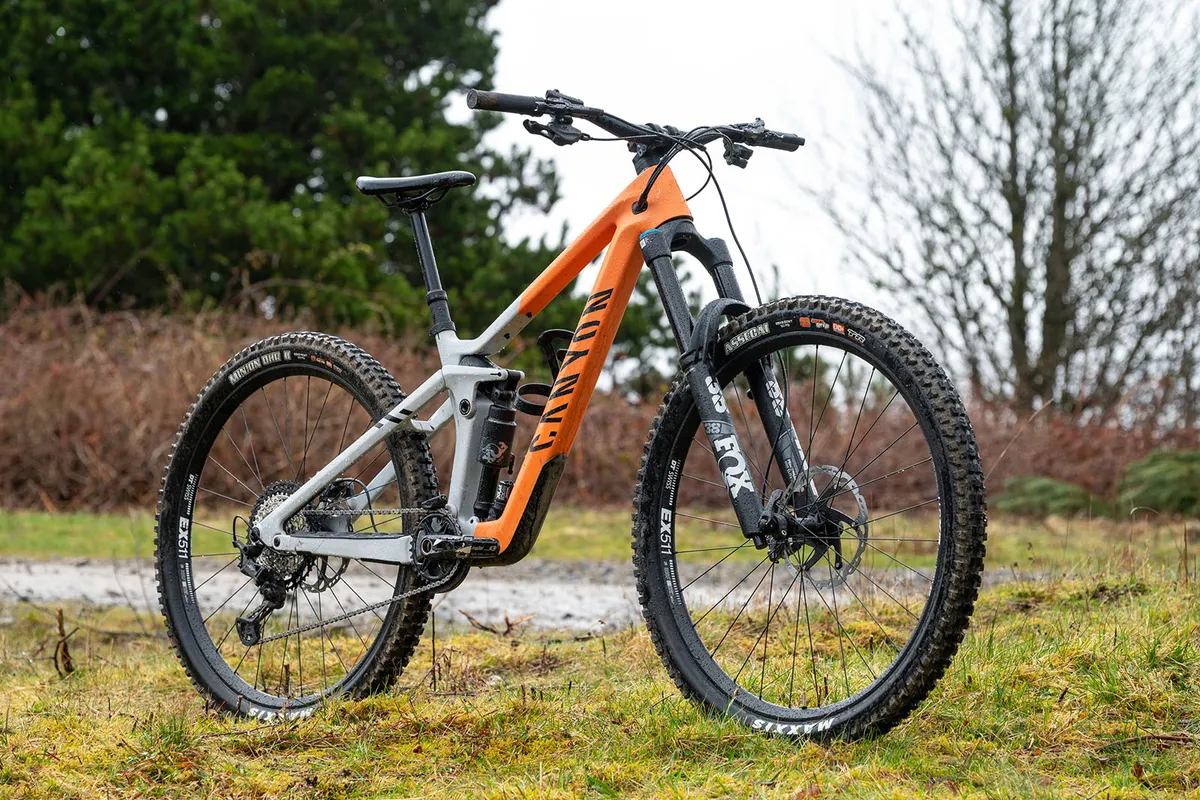
Canyon offers the Strive CFR in four sizes (S-XL), all of which sport 29in hoops.
That’s not the big news, though. What really should pique your interest are the offset headset cups, which enable you to alter the reach of each frame size by 10mm (these change the reach by 0mm, +5mm or -5mm).
On my small frame, that means I have the option of running the reach at 450mm, 455mm or 460mm, depending on my preference (the bikes ship in the middle position and additional cups enable you to achieve the different settings).
I can easily switch things up to better suit the terrain I’m riding. It’s a neat and useful adjustment that opens up more frame sizes to different-sized riders.
And yes, you read that right, the smallest reach on the size small is 450mm, which is longer than many brands' medium bikes. It’s certainly worth checking the sizing chart before you part with your hard-earned cash.
Another headline figure that’s equally staggering is the 63-degree head angle (with the Strive CFR in the Shred mode).
The front centre (the horizontal measurement from the centre of the bottom bracket axle to the centre of the front wheel axle) is a staggering 815mm on the size small.
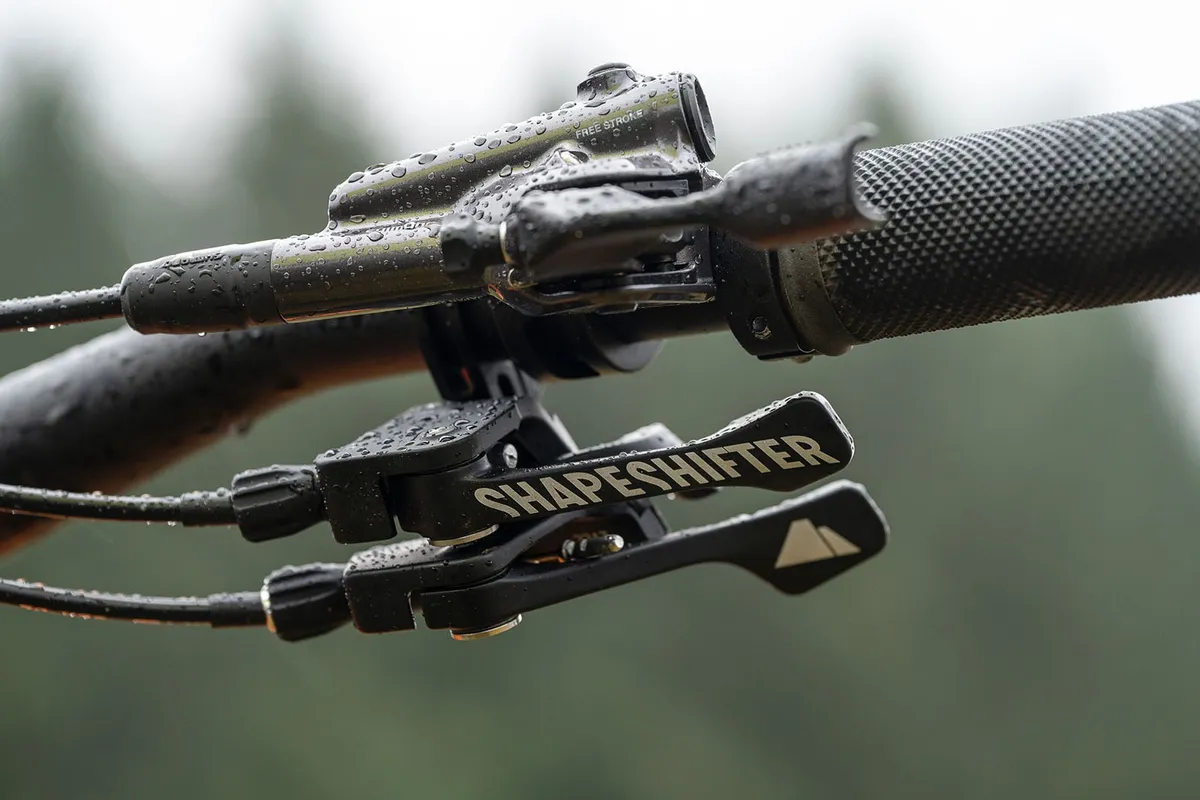
With the Shapeshifter in place and able to steepen things up for the climbs, Canyon made the most of this useful bit of equipment and made its downhill setting, seriously downhill.
Likewise, in the ‘Shred’ mode, the seat tube angle is still pretty steep at 77 degrees (with my saddle set to my preferred pedalling position), yet this steepens by 1.5 degrees in Pedal mode, which should make pedalling feel even more efficient.
All frame sizes get a short 435mm rear centre (effective chainstay length) and healthy 36mm of bottom bracket drop (that left the bottom bracket sitting at 440mm off the floor).
| | S | M | L | XL |
|---|---|---|---|---|
| Seat angle (degrees) | 76.5-78 | 76.5-78 | 76.5-78 | 76.5-78 |
| Head angle (degrees) | 63-64.5 | 63-64.5 | 63-64.5 | 63-64.5 |
| Chainstay (mm) | 435 | 435 | 435 | 435 |
| Seat tube (mm) | 400 | 420 | 435 | 460 |
| Top tube (mm) | 601 | 627 | 654 | 684 |
| Head tube (mm) | 105 | 110 | 120 | 140 |
| Bottom bracket drop (mm) | 36 | 36 | 36 | 36 |
| Wheelbase (mm) | 1,234 | 1,262 | 1,291 | 1,325 |
| Standover (mm) | 773 | 769 | 711 | 778 |
| Stack (mm) | 629 | 634 | 642 | 660 |
| Reach (mm) | 450-460 | 475-485 | 500-510 | 525-535 |
Canyon Strive CFR Underdog specification
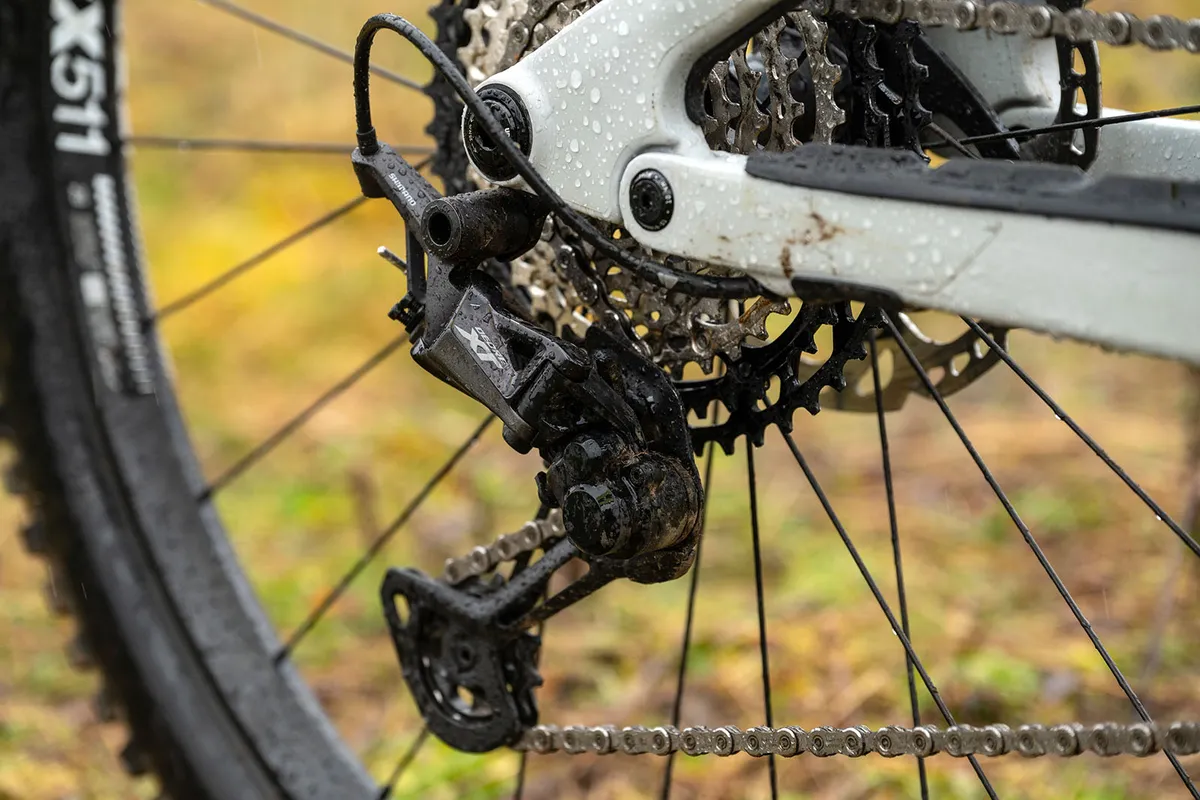
The Strive CFR only comes in three builds, the Underdog being the cheapest of the lot.
Even so, it’s still pretty pricey when compared to the likes of the Bird Aeris 9 and even the YT Capra 29 Core 4, which were also part of our 2023 enduro Bike of the Year test and come dripping with top-tier kit.
That’s not to say the Strive CFR Underdog is badly specced. Far from it.
Up front sits the Fox 38 Performance Elite fork, complete with GRIP2, which offers just about all the adjustment you could possibly want.
This is paired with a Fox X2 performance shock. This is less tunable (externally), though with just low-speed compression and rebound damping to fiddle with, setup should be simpler.
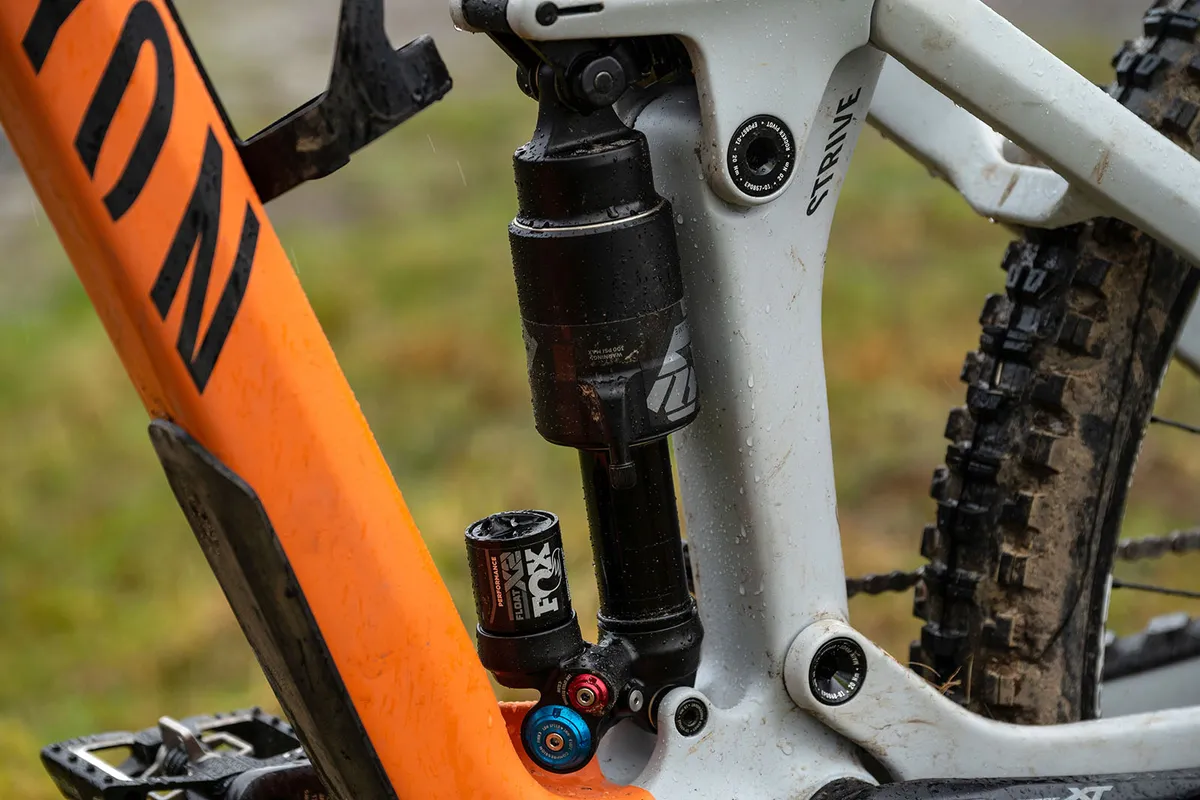
Gearing comes courtesy of Shimano’s XT line-up and uses its broad 10-51t cassette and a 32t chainring.
Shimano also take care of the brakes with its four-piston XT stoppers, which clamp onto 203mm rotors at either end.
Canyon supplies a host of the finishing kit from its G5 range, including the grips, stem and bars, along with the adjustable-travel dropper post. This has a maximum drop of 150mm on the size-small frame (it can be reduced to 125mm travel in 5mm increments).
The DT Swiss EX511 wheelset is wrapped with a Maxxis Assegai 3C MaxxGrip EXO+ front tyre and Maxxis Minion DHR II 3C MaxxTerra EXO+ tyre at the rear.
Canyon Strive CFR Underdog ride impressions
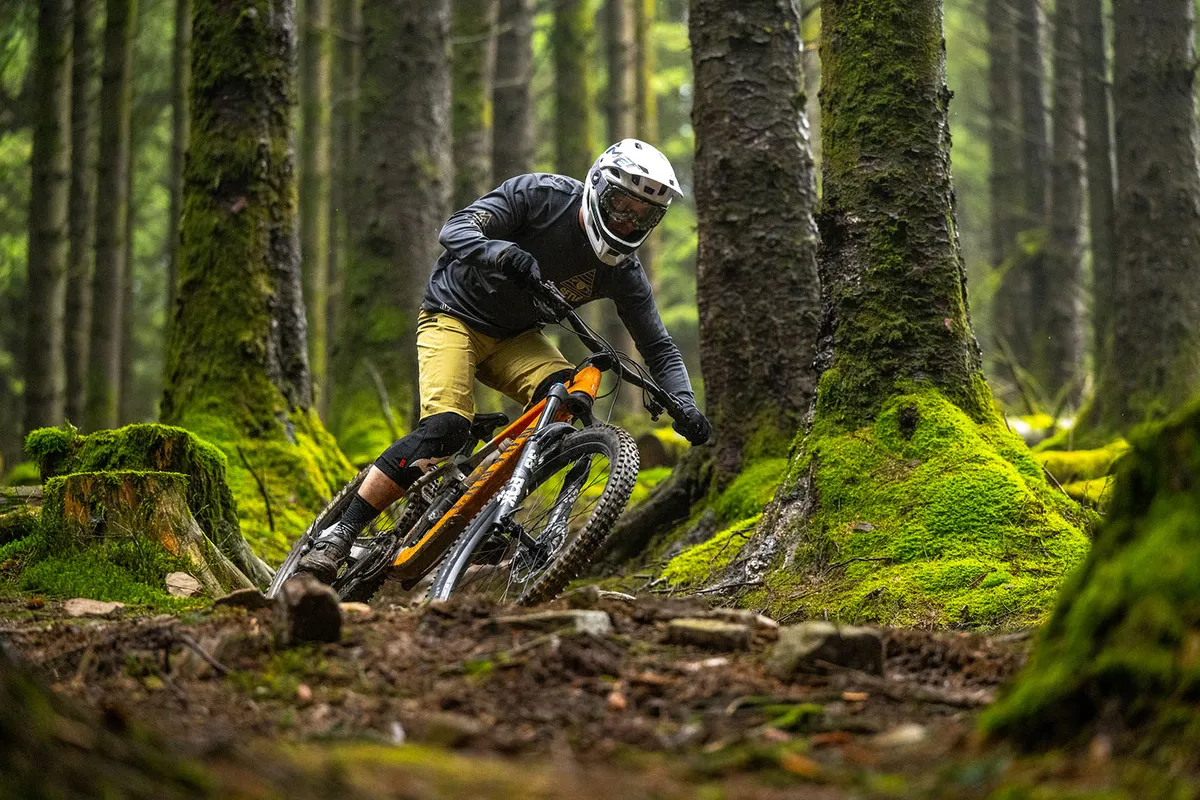
I rode the Canyon Strive CFR Underdog on a wide variety of trails around the South West of England and South Wales.
These varied in speed, gradient and terrain. They included some man-made tracks littered with high-speed rock gardens, heavy impacts and big jumps through to steeper, natural, technical trails where the roots and rocks were plentiful but speeds a little lower.
Canyon Strive CFR Underdog setup

Setting up the Strive CFR Underdog was relatively quick and pain-free.
At 68kg with kit on, I left the two stock volume spacers in the X2 shock, added around 145psi to achieve 30 per cent sag and opened up both the low-speed compression and rebound damping dials fully.
Up front, I also ran all the adjuster dials fully open and left the stock two volume spacers in the positive air chamber with 72psi.
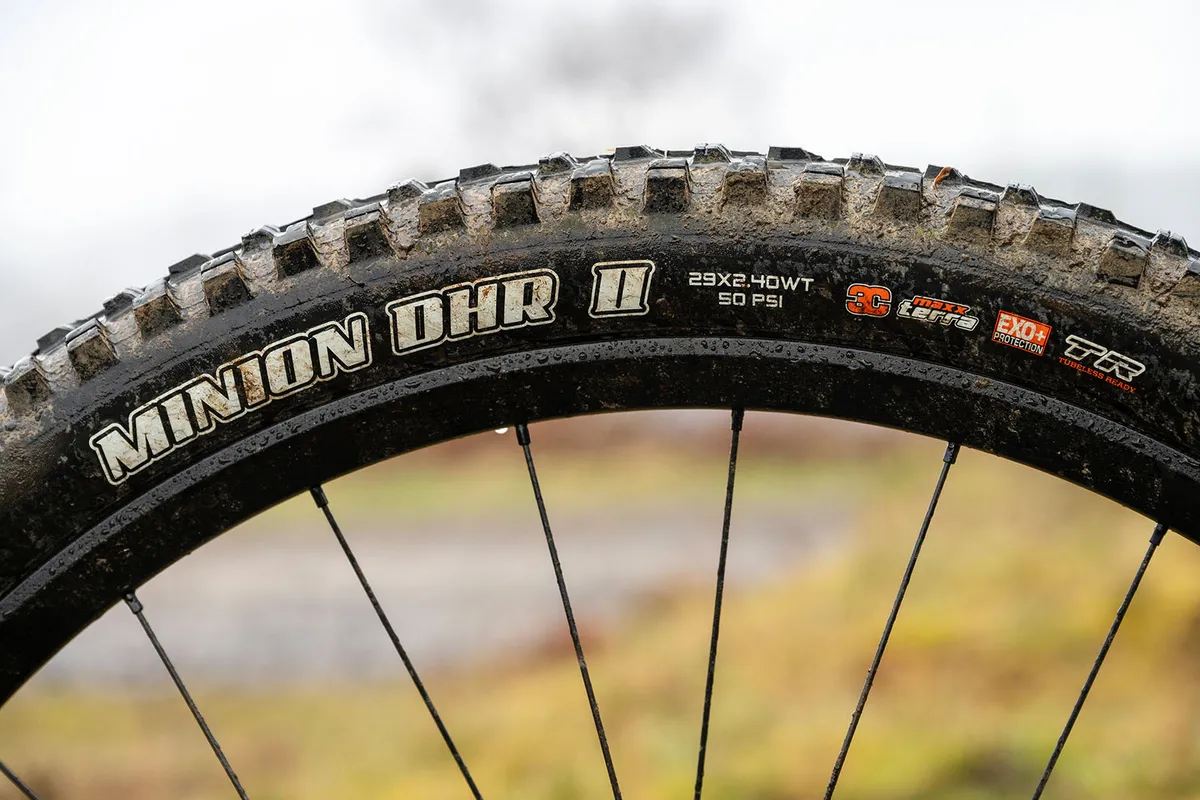
This setup still didn’t achieve the rebound speed I was after.
Like the Giant Reign 1 I had in this test, the Fox 38 Performance Elite fork didn’t feel quite as smooth or sensitive as the one found on the Nukeproof Mega 297 Carbon Elite, though the Canyon’s was better than that of the Giant.
I played about with reach positions, but ended up going back to the middle 455mm setting which felt like it suited me well and worked nicely with the 435mm rear centre.
Canyon Strive CFR Underdog climbing performance
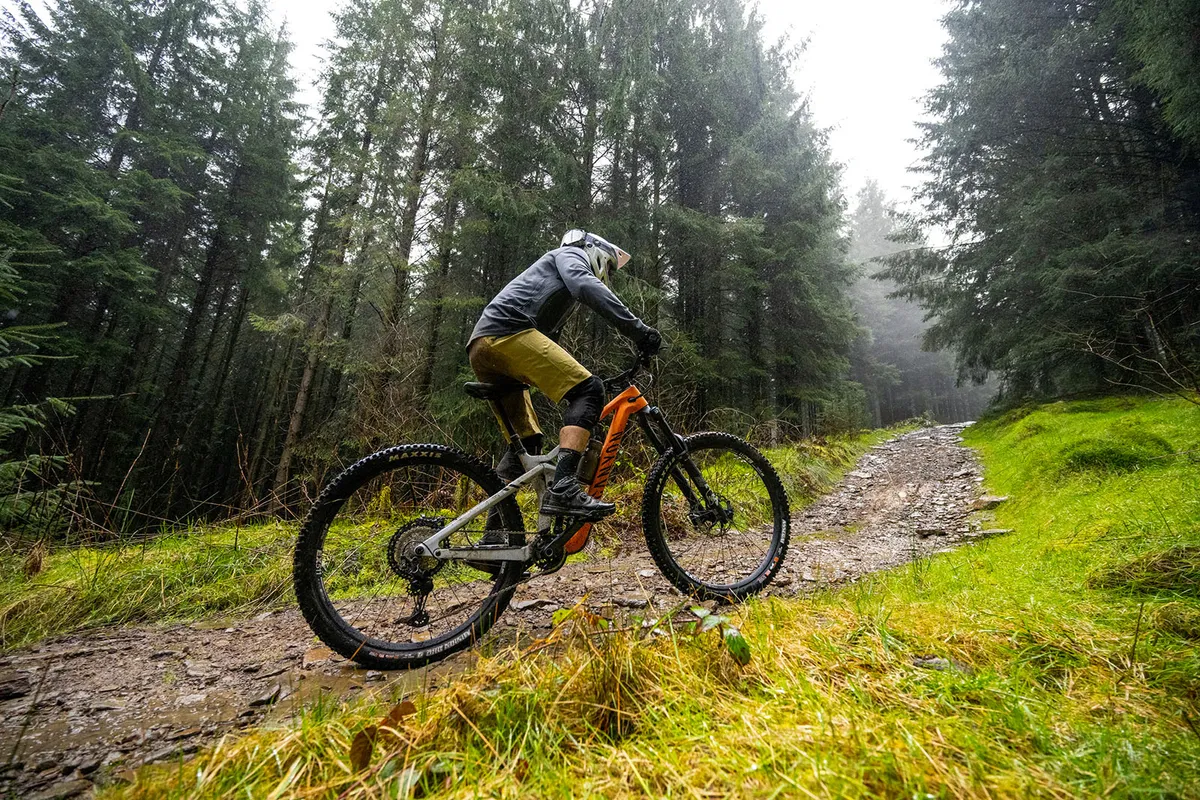
Thanks to the Shapeshifter, the Strive CFR is a great climber, with only the grippy tyres really holding up progress.
Switching into Pedal mode requires a push of the bar-mounted remote lever (just be sure to push the right one) and shifting your weight forwards momentarily.
It might sound complicated, but it’s really easy to master and far less of a rigmarole to use compared to early iterations of the system.
Once actuated, you can immediately feel the bike sit higher in its travel, which in turn places you in a more comfortable, upright position over the bottom bracket.
Sitting down and spinning up the hill, there’s very little in the way of suspension bob. Instead, the rear suspension feels firm enough to let you really wind on the power as you work your way up the hill.
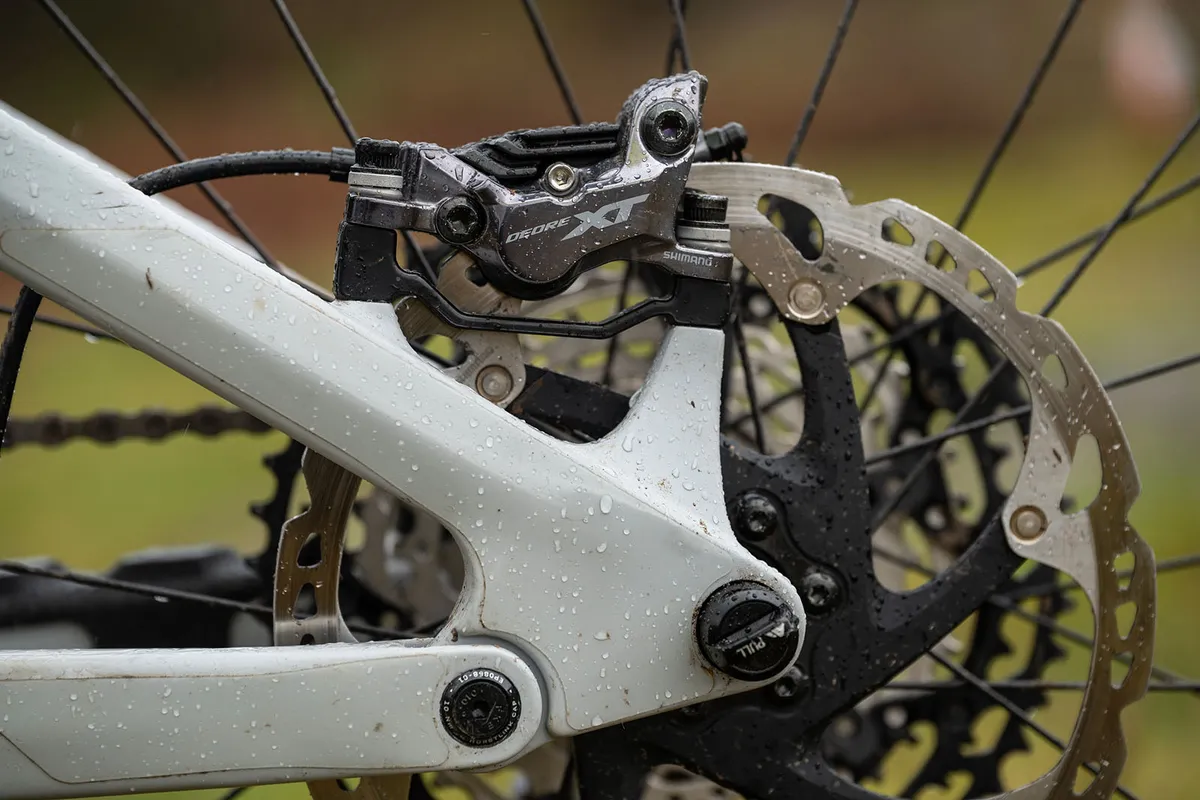
Alongside better angles, pedalling characteristics and firmer suspension is the fact that there’s absolutely zero need to be reaching for a shock lever, like there is on some bikes. Even in the Shred mode, the Strive CFR is on a par with many other enduro bikes.
That means you still get the added benefit of the rear end remaining active enough to keep the wheel moving over roots and rocks when it needs to, as opposed to a fully locked-out shock, which will lurch and bump about, leaving the rear tyre bouncing and spinning, just when you need the grip most.
People have turned their noses up at the Shapeshifter in the past (and other systems such as Scott’s TwinLoc). However, on the right bike and used in the correct way, I think it adds some serious benefits to performance. Not everyone will be sold on the additional complexity (and extra cables) it adds, though.
Canyon Strive CFR Underdog descending performance
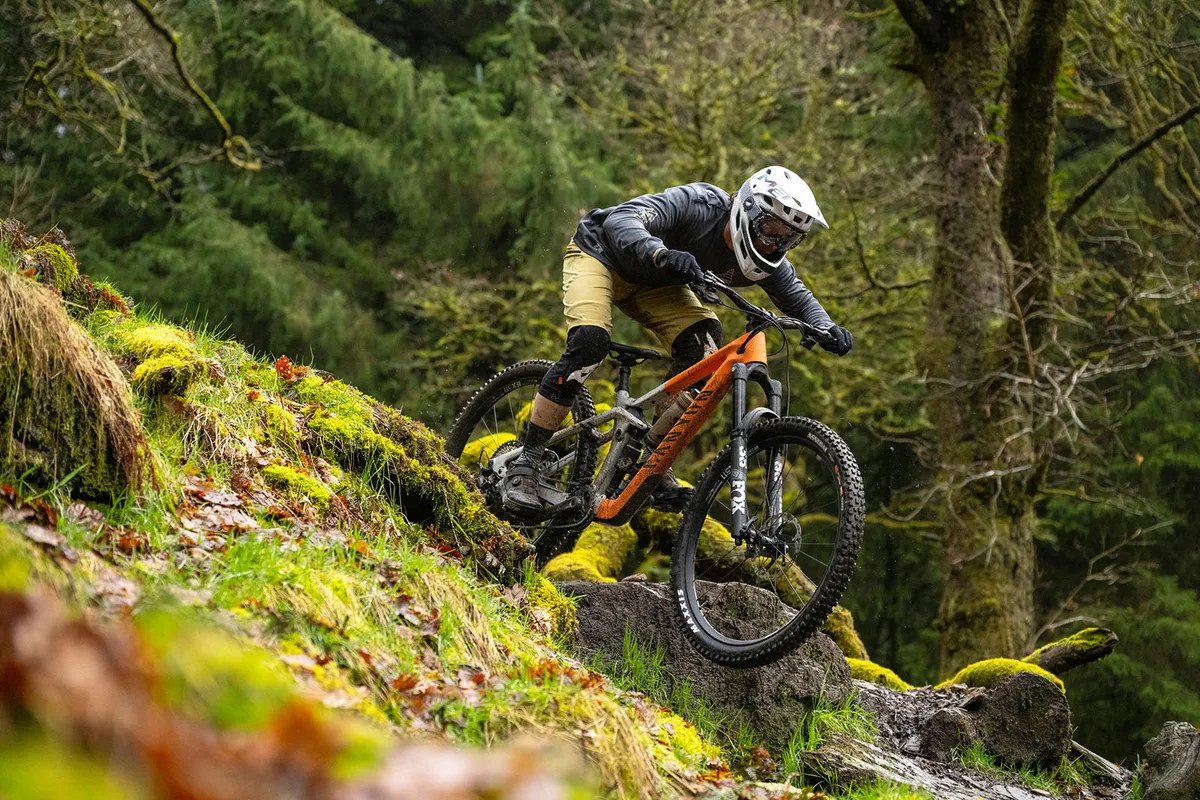
Hit the second lever on the remote and switch back into Shred mode and the Strive CFR turns into a thoroughbred downhill demon.
The rear shock sinks easily into its stroke, meaning the tyre is able to claw at any available traction on just about any surface.
There’s decent support, too, when you need to load the bike through turns and maximise exit speed, but I’d never describe the Strive as lively or poppy.
That’s not to say it wallows, pitches or lacks stability when you’re pushing on.
But tackle mellower tracks that require you to pump the bike through the terrain and the Strive CFR doesn’t give back in quite the same way as others, making it harder to maintain momentum.
Sure, there’s the option to actuate the Pedal mode, but in the heat of the moment, especially if you’re riding something blind, it’s not quite as simple as that.
And it could be for this reason that Canyon’s latest signing, 2022 Enduro World Champion, Jesse Melamed, opted to ride the Canyon Spectral over the Strive for the first two rounds of the Enduro World Cup in 2023. These rounds were said to be a little less downhill-orientated than the races later in the year.
A tale of two halves
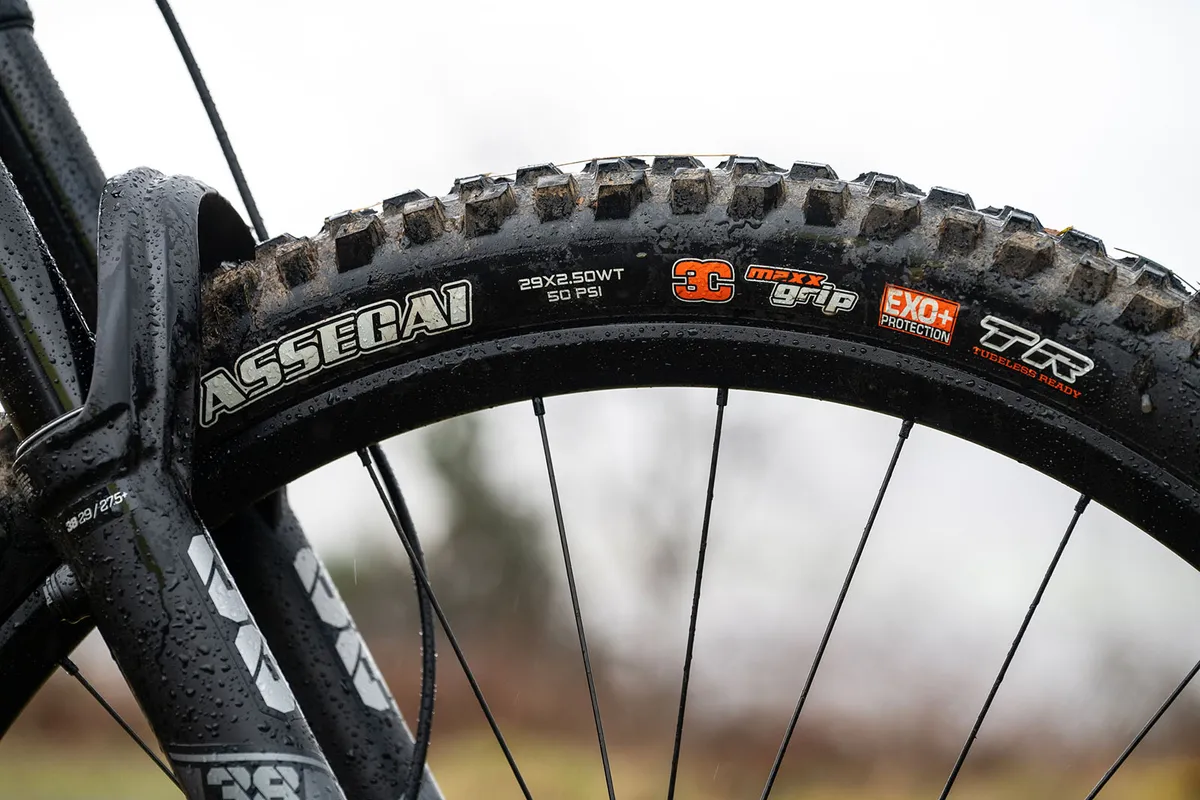
Instead, the Strive CFR feels as if it belongs in steeper terrain, pointed downhill and ridden as hard as you possibly dare. When Canyon said it had made a proper race bike, it really weren’t kidding.
The faster and rougher, or steeper and more technical the terrain, the better.
Pummelling through rock gardens, you’ll be surprised by just how silent the Strive CFR is. While the tyres patter over the bump edges, the back end thuds away quietly, smoothly moving the rear wheel up and out of the way in a bid to maintain speed and composure.
It’s comfortable, too, and high-speed rock gardens and high-load turns don’t faze the Strive CFR in the slightest.
The back end doesn’t feel as hyperactive as some bikes, but calmer, more serene and a little more muted. While that dulls rider feedback a bit, it helps to keep the chassis of the bike incredibly stable at speed.
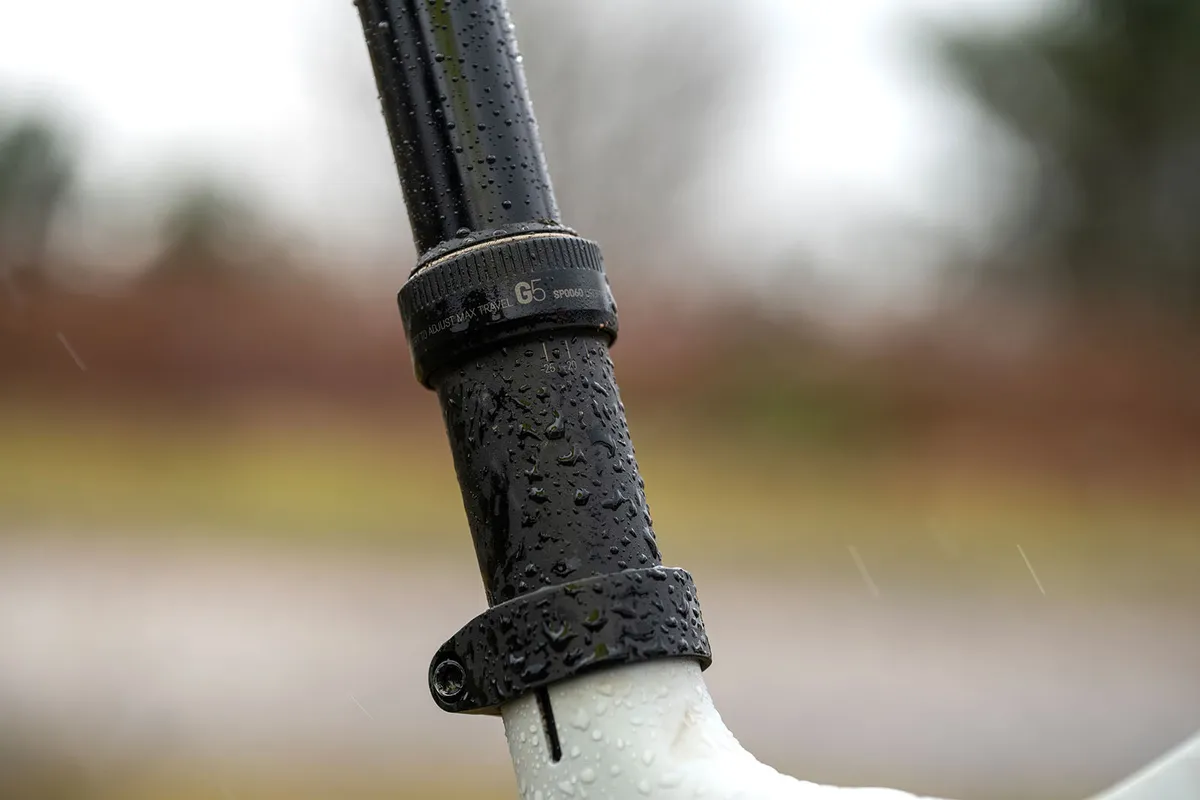
On bigger impacts, the Strive CFR feels as if it has more than 160mm of rear-wheel travel. The ramp is smooth towards the end of the stroke, making bottom-out feel hard to achieve, though this simply eggs you on to want to push the bike even harder.
The fork can be tuned to closely match the shock, though this particular example isn’t as smooth as the same model fork we’ve had on other bikes. A simple service would probably go some way to rectifying this, though.
Alongside the impressive, ground-hugging suspension performance, the combination of the low-slung, stretched-out geometry, incredible tyres and solid four-piston brakes, adds up to deliver an incredibly confident ride in the sketchiest terrain.
How does the Canyon Strive CFR Underdog compare?
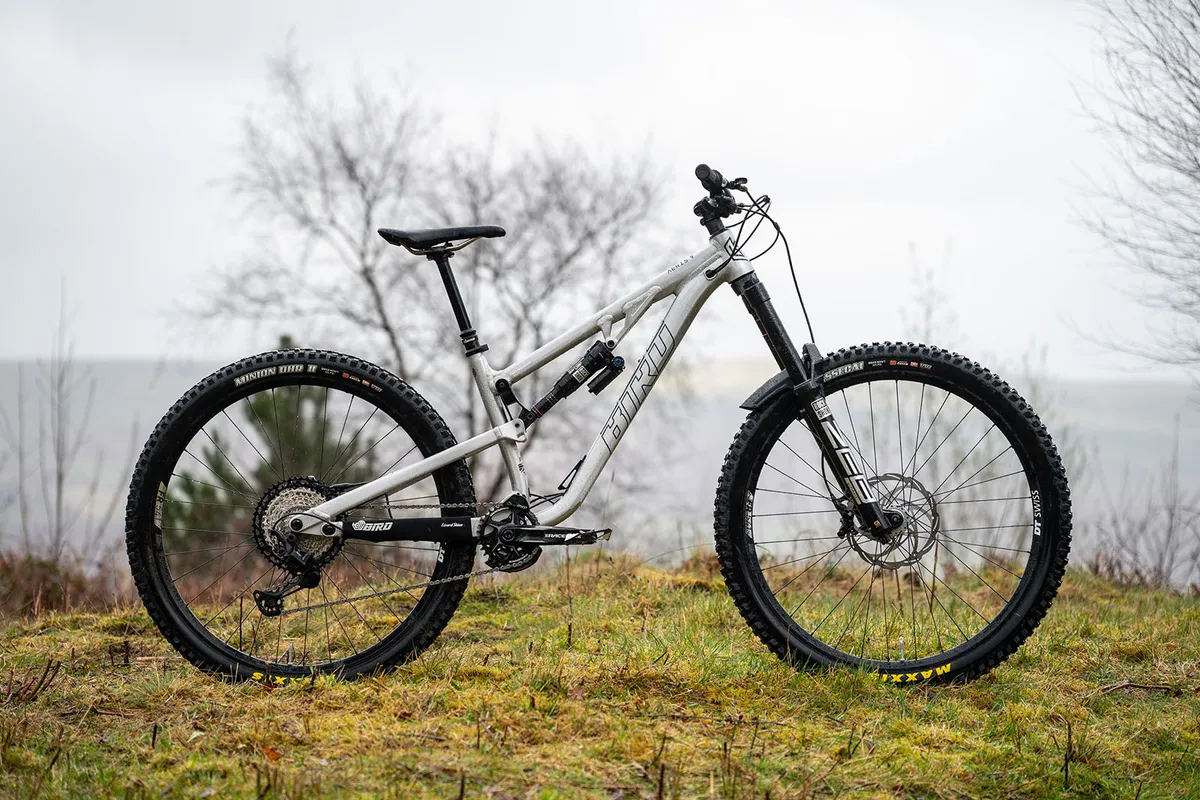
I’m going to compare the Canyon Strive CFR to the Bird Aeris 9.
The Aeris 9 is similarly slack and offers proportions that are very close to that of the Strive CFR.
On the climbs, both bikes fair pretty well, though the Strive’s Shapeshifter helps the Canyon edge ahead a little, making life uphill that bit easier.
On mellower trails, the Bird feels slightly more dynamic, with a little more pep and pop compared to the Strive.
Its rear end is keen to skim over rather than swallow up bumps, with more in terms of feedback through the bike than the Strive, helping to make the Aeris 9 feel a little easier to pump and push through trail undulations.
Get into steeper territory, though, and the Strive CFR walks away with it. That’s not to say the Bird struggles, more that the Canyon excels.
It’s better balanced, the rear suspension feels smoother and the stout feel through the frame amplifies rider confidence, making the toughest trails feel that bit easier.
Canyon Strive CFR Underdog bottom line
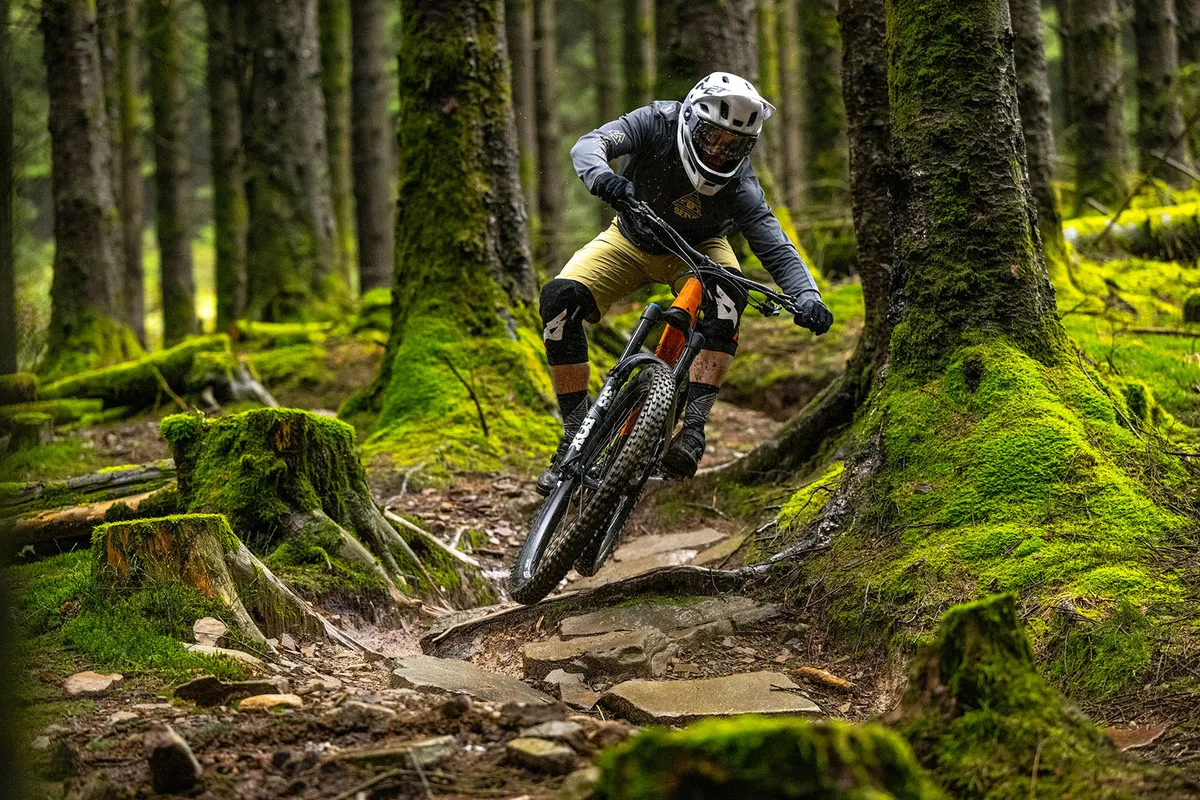
The Strive CFR Underdog is certainly a seriously fast and capable bike in the right hands on the right kinds of tracks.
The Shapeshifter system is a bonus on the climbs and certainly works to make life a little easier, even if it does add a little more in terms of complexity.
It’s in the steep, tech or high-speed rough that the Strive shines brightest. Anything too mellow or sedate and the Strive CFR needs more muscle to keep it moving than some of its competition.
But get it onto tougher, more treacherous terrain, and its smooth composure and calm demeanour go a long way to boosting rider confidence and thrills on the trail.
Enduro Bike of the Year | How we tested
Just what constitutes a great enduro bike and what does it take to earn the crown of the best enduro bike on test?
We’d argue it’s all about balance and compromise.
Enduro riding and racing takes in all kinds of terrain and gradients. To tackle it confidently, safely and at pace, your bike needs to feel balanced, composed and stable.
Essentially, that equates to suspension that keeps the tyres glued to the trail but prevents the bike feeling like a bucking bronco when things get rough.
Of course, balance doesn’t just come from the suspension, but the geometry, too. The right mix should enable it to feel like to a downhill bike when gravity is on its side and pedal back up the hill when the time comes.
The parts package needs to offer good value for money too. There’s always going to be an element of compromise, but the smart brands will spend their budgets wisely.
Over a 12-week period, all of the bikes in this category were put through their paces on a wide variety of trails and tracks to ascertain their strengths and weaknesses.
The bikes were ridden back-to-back, as well as in varying orders to see how each one felt at the start and end of the day, once rider fatigue had set in.
Our 2023 Enduro Bike of the Year contenders are:
- Nukeproof Mega 297 Carbon Elite
- YT Capra 29 Core 4
- Merida One-Sixty 6000
- Canyon Strive CFR Underdog
- Vitus Sommet 297 AMP
- Giant Reign 1
- Cotic RocketMAX Silver Mullet
- Bird Aeris 9
Thanks to…
Thanks to our sponsors Crankbrothers, FACOM Tools, MET helmets, Bluegrass Protection, Supernatural Dolceacqua, Le Shuttle and BikePark Wales for their support in making Bike of the Year happen.
Product
| Brand | canyon |
| Price | 7399.00 AUD,4999.00 EUR,4799.00 GBP,4999.00 USD |
| Weight | 15.8500, KILOGRAM (S) - |
Features
| Fork | Fox 38 Performance Elite, 170mm travel |
| br_stem | Canyon G5 |
| br_chain | Shimano M7100 |
| br_frame | CFR Carbon, 160mm travel |
| Tyres | Maxxis Assegai 3C MaxxGrip EXO+ 29x2.5in (fr)/ Maxxis Minion DHR II 3C MaxxTerra EXO+ 29x2.4in (r) |
| br_brakes | Shimano XT (203mm rotors) |
| br_cranks | Shimano XT |
| br_saddle | Ergon SM10 Enduro Comp |
| br_wheels | DT Swiss EX511 |
| br_shifter | Shimano XT |
| br_cassette | Shimano XT |
| br_seatpost | Canyon G5 adjustable, 125-150mm |
| br_gripsTape | Canyon G5 |
| br_handlebar | Canyon G5 Riser, 780mm |
| br_rearShock | Fox X2 Performance |
| br_availableSizes | S, M, L, XL |
| br_rearDerailleur | Shimano XT |
